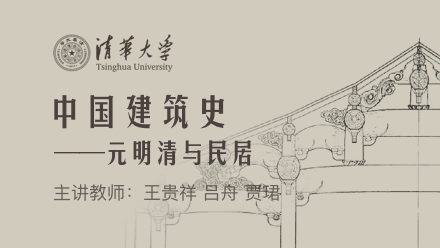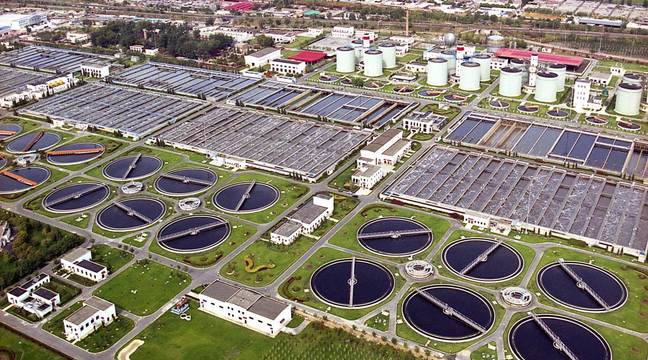
当前课程知识点:History of Chinese Architecture Part II > 14 Classical gardens and the imperial gardens in Ming and Qing dynasties > Section 2 > Private Gardens in Lingnan regions
返回《History of Chinese Architecture Part II》慕课在线视频课程列表
返回《History of Chinese Architecture Part II》慕课在线视频列表
下面我们再来说一说
岭南地区的私家园林
所谓岭南主要指的是五岭以南的区域
主要指的是广东和广西地区
当然也可以包含云南和福建的某些区域
这些地方的共同特征是气候比较湿润
具有亚热带的一些特点
清朝时期的岭南地区
私家造园之风大为兴盛
然后也修建了很多的林园
目前还有一些保存至今
相比较其他地区而言
岭南地区园林的特点是建筑密度偏大
所以它有个称谓叫“广厦连屋”
而它的水池大多数情况下
喜欢采用比较规则的几何形状
假山常常会使用本地特产的大块的花岗岩
而植物种类往往会包含
这个区域所特产的
水松 榕树 荔枝等等品种
这些都是不同于其他地区的重要的特征
我们值得一说的是两个例子
首先是东莞的可园
这座可园位于东莞城外的博厦村里
规模也就是四亩多
在这个园林的东面有一片湖面叫可湖
因为这个园林紧挨着湖而造
所以得名为可园
园林的外轮廓相当地不规整
里面的庭院也不是
像我们看到的其他地区那样
分成一进一进的规则的空间
它实际上里面的空间
是彼此相连的一种不规则的几何空间
主体建筑物是这座主厅堂 叫做双清室
紧着双清室的是一座可楼
在双清室的前面有一条曲齿形的水池
水池上跨有桥梁
所以我们发现内部空间的形态很奇特
而园林的周边
密密麻麻地布置了很多的房屋
所以它的建筑密度是相当大的
它的前面部分也设有门厅 轿厅 客厅
那院子里面还专门造了一个
狮子上楼台的假山
但是整个这个建筑群体虽然复杂
我们还是可以看出很明显的主次的差别
特别是这座可楼
在整个立面构图上面
占据了一个比较核心的地位
可楼大概高12米 分为四层
下面的三层
都是用相当封闭的砖砌筑而成的
而上面更像是一个
比较独立的歇山顶的木构房屋
据说修建它的一个重要的原因是
这个地区常常为了防盗而建造碉楼
那么这个传统也在园林当中得到了延续
当然登这个楼
也方便地可以去俯瞰整个园林的景观面貌
它的主厅双清室的平面
有点像繁体的亚字
所以它的外号叫亚字楼
然后里面的很多装修的图案
也是取这个亚字的形状
在可园的周边 我们发现
大量的彼此相连的两层的房屋
所有这些房屋基本上都连成了一体
而这个水池所占的比重非常地小
其中主要是养金鱼的
第二个例子我们来说一个更小的私家园林
那是在广州的番禺区的南村 余荫山房
这座小园林更明显地表现出了
几何化的一个倾向
它的主入口在南面
进门之后就可以看到一个
平面为梯形的小建筑
这个建筑再往北是一个方形的水池
对着水池的就是它的主厅
水池东侧架了一座廊桥
然后水面演变成一条笔直的溪流
继续向东流
又演化成一个八角形的水池
水池中央设有一座体量比较大的
八角形的水榭
大致是这样的一个空间格局
我们来看一下
其中这个池南的小建筑叫临池别馆
而池北的正堂叫深柳堂
二者之间形成了一个
非常明显的轴线对位关系
这是水池东侧所设的这座廊桥
造型相当地别致
也完全可以和我们前面提到的
苏州拙政园的小飞虹相媲美
水池东边的溪流流入八角形的水池
为了取八面玲珑之意
所以这个水榭就叫玲珑水榭
实际上这个水榭
占据了水池的大部分的面积
使得人靠得很近的时候
才可以看到这个水面
在最东边还设了一组叠石
使用的是广东英德县所产的英石
而且还种了一些竹子
另外东北角设了一个独立的小亭子
这座小园林是一个非常典型的
受到西洋园林影响的一个实例
无论是全园的布局 还是水池的形状
包括建筑的装修 还有栏杆 雕饰
都可以看到很多西洋建筑
和西洋园林的影子
这里面也反映了广东地区
它作为一种对外通商的口岸
在明清时期它最容易受到外来的影响
再加上这个区域相比较其他地区来说
它中国传统文化的因子相对比较薄弱
所以它也比较开放
园林的兴造往往也不拘一格
从这两个例子里边
我们都可以看到一些这样的特色
-Section 1
--Xanadu and Dadu of the Yuan Dynasty
--Religious Buildings of the Yuan Dynasty
--Buildings of Science and Technology in the Yuan Dynasty
-Section 2
--Reconstruction of the Ming System and an Overview of Its Cities and Architecture
--Cities and Towns Outside the Capitals in the Ming Dynasty
-Homework
-Section 1
--Forbidden City of Beijing in Ming Dynasty
--Imperial Altars and Temples of Beijing in Ming Dynasty
--Temple of Confucius in Qufu, Ming Dynasty
--Ming Xiaoling Tomb in Nanjing and the Ming Tombs in Changping
-Section 2
--The Buddhist Architecture of Ming Dynasty
--Taoist architecture of the Ming Dynasty
--Architecture of the Educational Institution of Ming Dynasty
-Homework
-Section 1
--An introduction to architecture of the Qing Dynasty1
--An introduction to architecture of the Qing Dynasty 2
-Section 2
-Section 3
-Homework
-Section 1
--Cities and urban facilities in the Qing Dynasty
--Government office mansions and architectural rules1
--Government office mansions and architectural rules 2
-Section 2
--Temples and altars, religious architecture and spiritual life
--Commercial architecture and econimic life
--Theaters and recreational life
-Homework
-Section 1
--Architecture: Europe and China & Imperial Specifications for State Buildings
-Section 2
--The architectural artisans 1
--The architectural artisans 2
--The architectural artisans 3
-Section 3
--Appreciation and Analysis of a Few Examples1
--Appreciation and Analysis of a Few Examples 2
--Appreciation and Analysis of a Few Examples 3
-Homework
-Section 1
--Introduction to the Chinese classical gardens
--The imperial gardens in Ming and Qing dynasties 1
--The imperial gardens in Ming and Qing dynasties 2
-Section 2
--Private gardens in Jiangnan (the regions south of Yangtze River)
--Private Gardens in Lingnan regions
--Private Gardens in North China
-Homework
-Section 1
--A brief history of the Chinese vernacular architecture
--The courtyard house of the northern China
--Tingjing style vernacular dwelling in the regions south of the Yangtze River
-Section 2
--Tingjing style folk dwellings of the southern China
--The Hakka earthen house in the southeastern China
--Cave dwellings in the Loess Plateau
--The architecture achievement of Chinese traditional vernacular dwellings
-Homework
-Section 1
--Residential buildings of the Manchu and Chaoxian (Korean) ethnic groups
--Architecture of the Uygur ethnics in Xinjiang
-Section 2
--Tibetan architecture in Tibet
--Multi-ethnic Architectures in the Southwest Regions
-Homework




